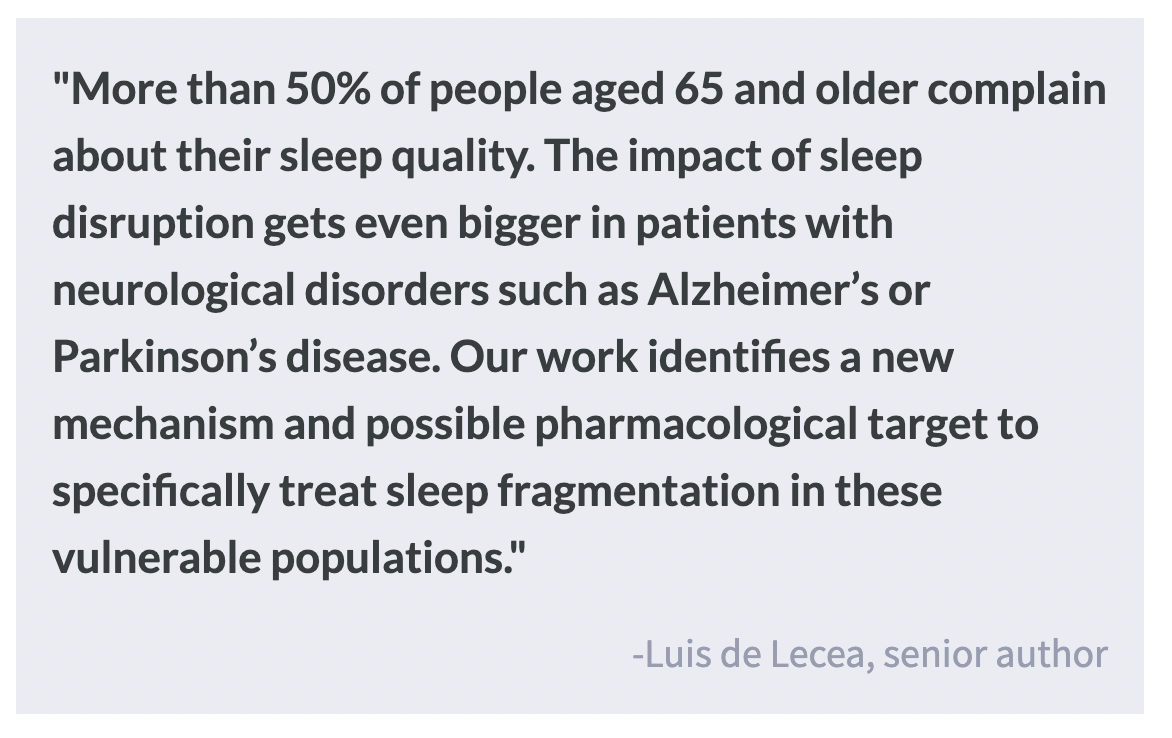Sleep Instability in Aging is Driven by Hyperexcitable Neural Circuits
Post by Lincoln Tracy
The takeaway
Increased excitability in the neural circuit responsible for an awake state is associated with sleep disruption as we age.
What's the science?
Sleep quality is strongly linked with cognitive function and has been shown to decline with age. However, the mechanisms responsible for sleep instability are unknown. One suggested mechanism is the emergence of increased excitability of arousal-promoting neural circuits (which keep us awake) as we get older, which disrupt sleep stability. The activity of hypocretin—also called orexin—neurons is strongly associated with wakefulness and is responsible for initiating and maintaining an awake state. This week in Science, Li and colleagues investigated whether the intrinsic excitability of hypocretin neurons is altered as we age and whether the altered activity leads to sleep instability.
How did they do it?
First, the authors compared sleep/wake patterns in young (< 5 months) and old (> 18 months) mice using electroencephalography and electromyography recordings, and determined the number of hypocretin neurons in these mice. Second, they used fiber photometry to record how active hypocretin neurons were while the mice were awake or asleep. Third, they used optogenetic blue light to stimulate hypocretin neurons to examine the effects on sleep and awake states. Fourth, they compared the excitability of hypocretin neurons between young and old mice using patch clamp recordings from brain slices. Finally, they explored the role of voltage-gated potassium channels in hypocretin neuron excitability, as altered potassium channel excitability could contribute to the neuronal hyperexcitability.
What did they find?
First, the authors found that old mice had fragmented awake and non-REM sleep periods—which happen right after you fall asleep—compared to young mice. Second, they found that older mice had almost 20-30% fewer hypocretin neurons than young mice, suggesting these neurons become more vulnerable as aging occurs. Third, the fiber photometry recordings revealed a lower threshold is required in older mice for hypocretin neurons to initiate the transition from sleep to an awake state. Fourth, using optogenetic blue light to activate hypocretin neurons resulted in old mice spending more time awake compared to young mice, consistent with the hypothesis that aged hypocretin neurons are more excitable. Fifth, the patch clamp recordings showed a greater proportion of aged hypocretin neurons fired spontaneously than younger neurons, again indicating their hyperexcitability. Finally, chemically blocking voltage-gated potassium channels increased hypocretin neuron activity in young animals and increasing potassium channel activity in aged animals decreased hypocretin neuron activity and rejuvenated sleep patterns.
What's the impact?
Taken together, this study found that elevated hypocretin neuron excitability is associated with sleep disruption in aging. The finding that manipulating voltage-gated potassium channel activity alters the firing rates of hypocretin neurons suggests potential novel pharmaceutical approaches for addressing the poor sleep quality observed in aging.


